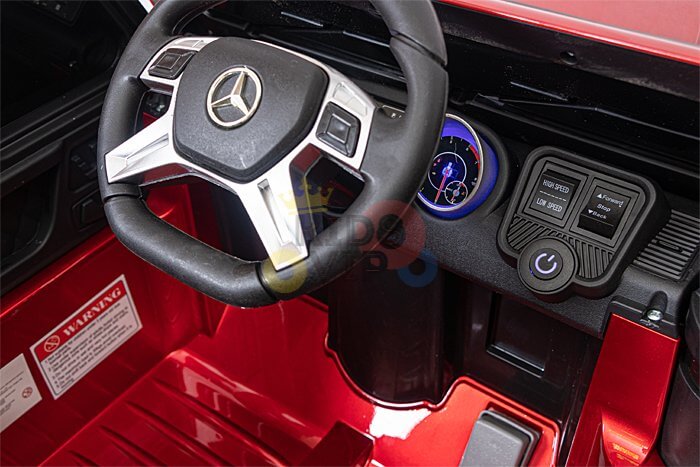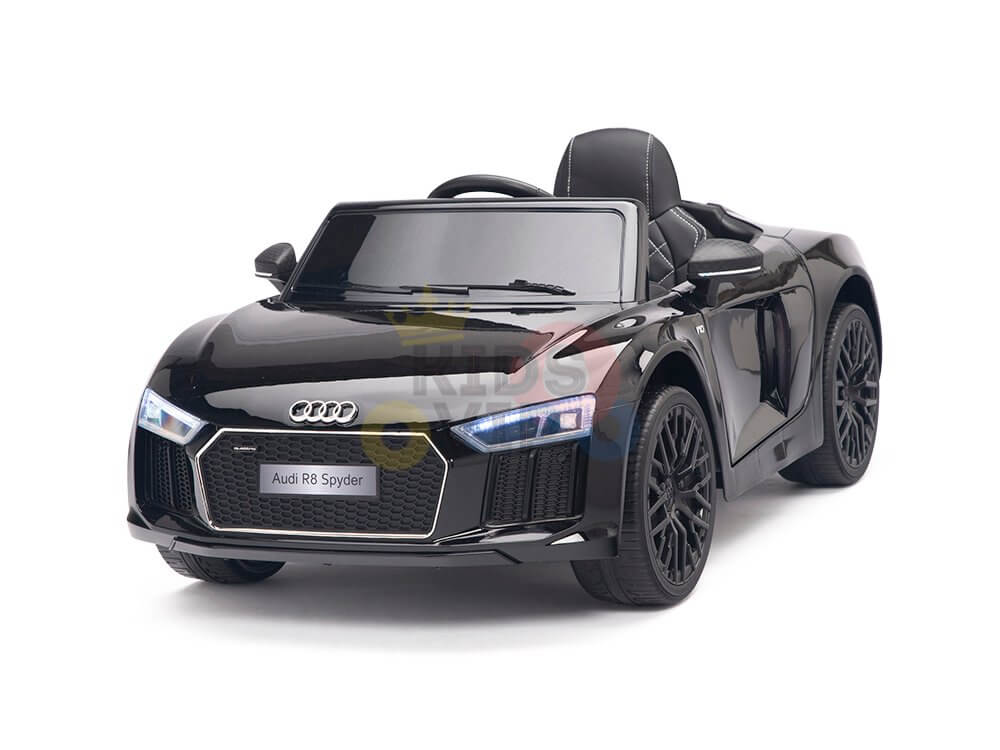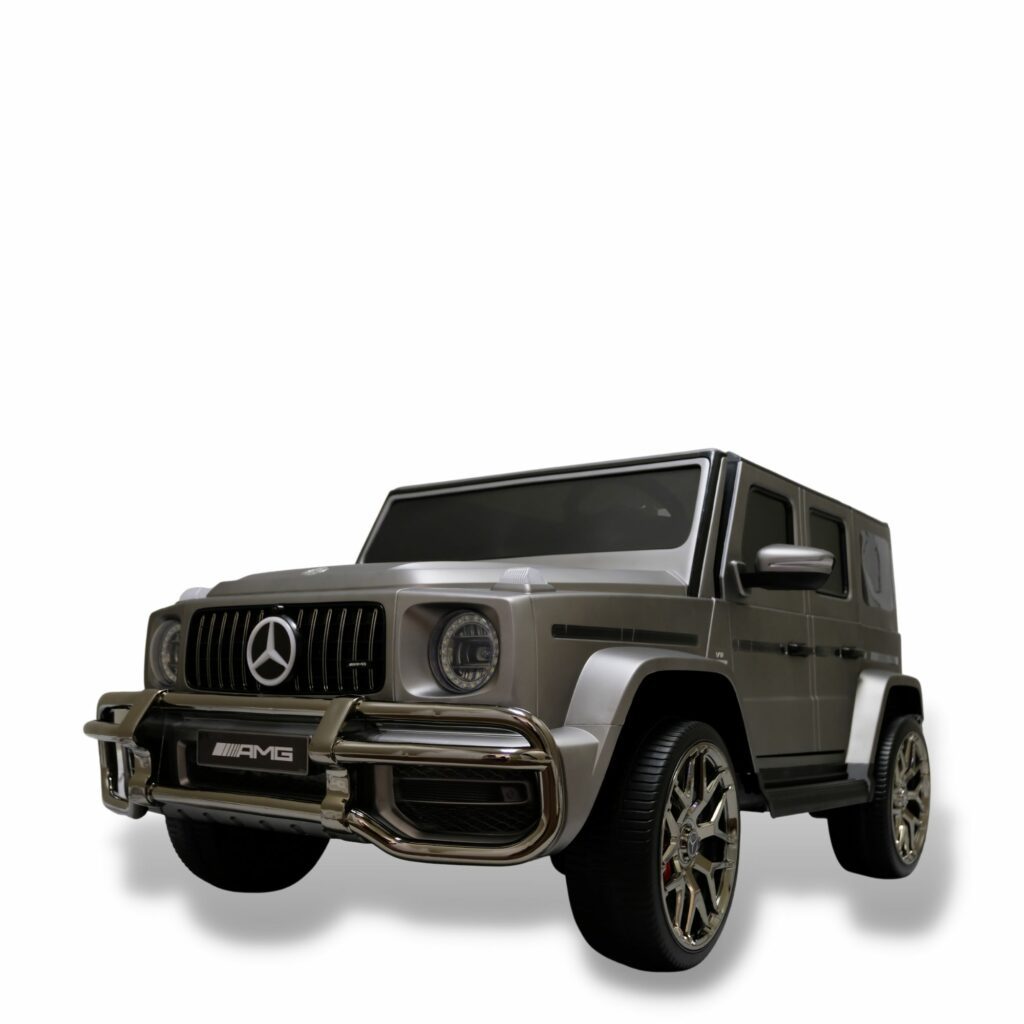Electric ride-on toys have become increasingly popular over the years, captivating the hearts of young children and offering them an exciting way to engage in imaginative play. One of the key factors that parents consider when choosing a ride-on toy is the speed it can reach, ensuring that their children have a thrilling yet safe driving experience. In this blog, we will delve into the world of 12V ride-on toys and explore just how fast these electric cars can go. From understanding the factors that determine speed to the safety considerations, we will cover all the essential information to help you make the right choice for your child. So, let’s hit the road and discover the exciting speed of 12V ride-on toys!
An Overview of 12V Ride-On Toys
If you’ve ever come across children zooming around in their very own mini electric ride-on toy cars, chances are, they were riding a 12V ride-on. Designed to resemble real cars, these battery-powered electric toy vehicles have become a favorite among young children. Equipped with a 12-volt battery, these ride-ons strike a balance between speed and safety, offering an exhilarating yet controlled driving experience. From miniature replicas of popular car models to tractors, SUVs, and quad bikes, 12V ride-on toys come in a variety of designs that capture the imagination of children of all ages.
What are 12V ride-on toys?
12V ride-on toys, also known as electric ride-ons, are battery-powered toy cars that provide young children with a captivating and fun way to explore their surroundings. These ride-ons are powered by a 12-volt battery, which gives them the ability to reach moderate speeds while ensuring the safety of the child. Designed to resemble real cars, ride-ons like power wheels, quad bikes, SUVs, tractors, and electric motorbikes offer children the experience of driving their very own vehicle. With a size and weight limit suitable for young children, these ride-ons are the perfect way for kids to engage in imaginative play, develop motor skills, and enhance spatial awareness, all while enjoying the thrill of being behind the wheel of their toy car.
The benefits of choosing a 12V ride-on
Choosing a 12V ride-on toy for your child comes with numerous benefits that contribute to their overall development and enjoyment. The higher voltage of the 12-volt battery ensures that the ride-on can maintain a moderate speed, striking the right balance between excitement and safety. In addition, the battery life of the 12V ride-ons allows for an extended playtime, ensuring that your child’s favourite toy won’t run out of power too soon. These electric ride-ons also offer young children a sense of independence and responsibility as they learn to navigate and control their toy car. Overall, the 12V ride-on toys provide young children with an immersive play experience that enhances their motor skills, spatial awareness, and imaginative play, making them a favourite among kids and parents alike.
Understanding the Speed of 12V Ride-Ons
As parents, we want to ensure that our children have a safe and enjoyable driving experience. Understanding the speed capabilities of 12V ride-ons plays a crucial role in achieving this goal. In the following sections, we will explore the factors that determine the speed of these electric toys, the average speed range of 12V ride-ons, and the various factors that can affect their speed performance. So, let’s buckle up and dive into the fascinating world of speed in 12V ride-on toys!
How speed is determined in 12V ride-on toys
The speed of 12V ride-on toys is determined by a combination of factors, including the size of the motor, the electrical power it generates, and the voltage of the battery. The motor size plays a significant role in converting electrical power into motion, influencing the achievable top speed of the ride-on toy. Additionally, the electrical power produced by the motor, along with the battery voltage, contributes to the overall speed capabilities of the ride-on toy. By understanding the relationship between the motor size, electrical power, and battery voltage, parents can assess the speed potential of different 12V ride-on models, allowing them to choose the one that aligns with their child’s preferences and safety requirements.
Average speed of 12V ride-on toys
The average speed of 12V ride-on toys typically ranges between 3 to 5 miles per hour (mph). This speed range ensures that children can enjoy the excitement of driving while maintaining a safe and controlled pace. The top speed of the ride-on toy creates an engaging experience for young drivers, allowing them to have fun while still providing parents with peace of mind. By offering an average speed range, 12V ride-ons strike the perfect balance between thrill and caution, ensuring that children can enjoy their toy car to the fullest, both indoors and outdoors.
Factors affecting the speed of 12V ride-on toys
The speed of 12V ride-on toys can be influenced by several factors, including:
- Weight limit: The weight limit of the ride-on toy can affect its speed performance, especially when carrying heavier loads.
- Surface type: Flat surfaces generally allow the ride-on toy to reach its maximum speed, while rough surfaces may result in slower speeds.
- Battery size: The size of the battery directly impacts the ride-on toy’s speed capabilities, with larger batteries often providing a greater speed potential.
- These factors, along with the voltage and motor specifications, collectively contribute to the ride-on toy’s speed capabilities, making it essential for parents to consider these aspects when selecting the best ride-on toy for their child.
Safety Concerns with Different Speeds
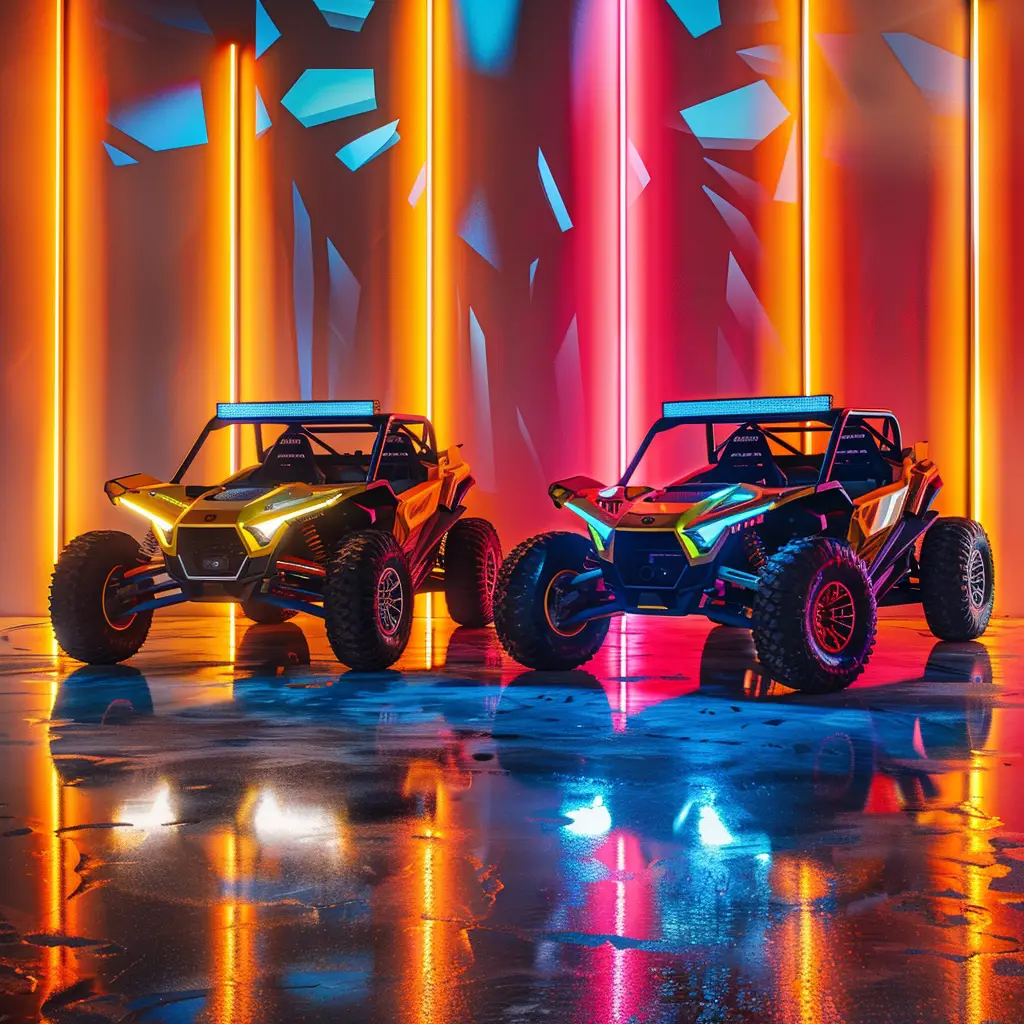
eeb25014 989e 4adf a379 ac05eca9d68b b
Safety is of utmost importance when it comes to children’s ride-on toys. The speed of the ride-on toy plays a significant role in ensuring a safe and enjoyable play experience. In the following sections, we will explore the importance of speed in relation to safety, the essential safety features for high-speed ride-ons, and tips for supervising children using ride-on toys. By understanding the safety considerations and implementing proper measures, parents can ensure that their children have a secure ride-on toy experience. So, let’s dive into the world of ride-on toy safety and discover how speed plays a crucial role!
Importance of speed in relation to safety
Maintaining an appropriate speed limit for ride-on toys is vital for the safety of young children during play. The maximum speed of the ride-on toy should be set at a level that allows children to navigate and control the toy car comfortably, without compromising safety. Excessive speed can increase the risk of accidents and collisions, potentially leading to injuries. By setting an optimal speed limit, parents can ensure that their children can enjoy the ride-on toy safely, with enough time to react to the surrounding environment.
Paying attention to speed, practicing caution, and wearing seat belts when available are important safety measures to consider when choosing and using ride-on toys.
Essential safety features for high-speed ride-ons
High-speed ride-on toys require essential safety features to ensure the well-being of young drivers. Some of the crucial safety features include:
- Seat belts: Ensuring that the ride-on toy is equipped with seat belts helps keep the child securely seated, even during higher speeds or sudden stops.
- Size of the motor: A motor size suitable for the ride-on toy’s speed capabilities ensures that the toy car can maintain stability and control at higher speeds.
- Power management: Incorporating power management features, such as speed governors, allows parents to regulate the maximum speed of the ride-on toy, providing greater control over the toy car.
By having these safety features in place, parents can provide their children with the confidence to explore higher speeds while ensuring their safety remains the top priority.
Tips for supervising children using ride-on toys
Supervision is crucial when children are using ride-on toys, regardless of the speed at which they operate. Here are some important tips for supervising children using ride-on toys:
- Always supervise young children when they are using ride-on toys, providing guidance and ensuring their safety.
- Encourage children to ride on flat surfaces, away from rough or uneven areas, to minimize the risk of accidents.
- Teach older children the rules of safe ride-on toy use, emphasizing the importance of cautious driving and adherence to the speed limit.
- Set weight limits and age restrictions for ride-on toys, following the manufacturer’s specifications, to ensure optimal performance and safety.
By implementing these tips and maintaining constant supervision, parents can create a safe and joyous ride-on toy experience for their children.
Comparing Speeds: 12V Ride-Ons vs Other Toys
When it comes to ride-on toys, the speed of the toy car can vary depending on the voltage of the battery and the specifications of the motor. In this section, we will compare the speed of 12V ride-on toys with other battery-powered ride-on options, such as 6V and 24V ride-ons. By understanding the speed differences between these options, parents can make an informed decision when selecting the most suitable ride-on toy for their child’s age and preferences.
Speed comparison between 6V, 12V and 24V ride-ons
When comparing ride-on toys, the 6V options are perfect for young children, reaching speeds of about 2 mph. On the other hand, 24V ride-ons, with higher battery voltage, can achieve speeds of up to 6 mph. The 12V ride-ons strike a balance, offering moderate speed suitable for older children. It’s important to note that the motor size and electrical power are key factors in determining the maximum speed of these electric cars. These different voltage options cater to various age groups and speed preferences, ensuring the best way for kids to enjoy their ride-on experiences.
Suitability of different speed ride-ons for various age groups
The speed of ride-on toys can determine their suitability for different age groups. Here’s a breakdown of speed suitability for ride-ons based on age:
- Slower ride-on speeds, such as the 6V options, are safer for toddlers and young children still developing their coordination and motor skills.
- Older children, who have better control and coordination, can handle the moderate speed of 12V ride-ons, such as jeep or quad models.
It’s important to match the speed of the ride-on toy with the age, size, and ability of the child using it. This ensures a comfortable and secure ride-on experience, allowing children to enjoy their toy car while minimizing the risk of accidents or injuries.
Pros and cons of slower vs. faster ride-on toys
There are pros and cons to both slower and faster ride-on toys. Let’s take a look at the benefits of each:
- Slower ride-on toys: Slower ride-on speeds offer caution and are often best suited for younger children who are still developing their motor skills. These ride-ons prioritize safety, allowing young children to gain confidence while driving. Slower ride-on toys generally have longer battery life, allowing for more extended playtime between charges.
- Faster ride-on toys: Faster ride-on speeds offer a greater ability to thrill older children who are more capable of handling higher speeds. These ride-ons provide an exciting and exhilarating experience, but they typically have shorter battery life due to the higher power demands.
By considering the pros and cons of each speed category, parents can make an informed decision based on their child’s age, ability, and preferences, ensuring the ride-on toy aligns with the child’s developmental stage and safety requirements.
Choosing the Right Speed for Your Child
Choosing the right speed for your child’s ride-on toy is essential to ensure both their enjoyment and safety. In the following sections, we will explore the factors to consider when selecting a ride-on toy speed, along with recommendations for first-time ride-on toy buyers. By understanding these considerations, parents can confidently choose the ride-on toy that best suits their child’s age, size, and developmental stage, providing them with a thrilling and safe playtime experience!
Factors to consider when selecting a ride-on toy
When choosing a ride-on toy, several factors should be taken into consideration to ensure the best fit for the child. These factors include:
- Weight limit: The weight limit of the ride-on toy determines if it can accommodate the child securely, maintaining speed and stability.
- Battery size: Battery size directly affects the ride-on toy’s power and speed potential, with larger batteries often offering greater speed capabilities.
- Motor size: The motor size of the ride-on toy influences its speed, acceleration, and overall performance, ensuring the toy can handle the child’s weight and demands.
Considering these factors, along with the child’s age, size, and ability, helps parents choose the ride-on toy that offers the best speed, safety, and enjoyment for their child.
Recommendations for first-time ride-on toy buyers
For first-time ride-on toy buyers, it’s important to take the best approach to select the most suitable toy car for your child. Here are some recommendations to consider:
- Start with a ride-on toy with a slower speed for young children, gradually increasing the speed as they grow and develop better control.
- Look for ride-on toys with adjustable speed settings, allowing children to progress at their own pace.
- Check the manufacturer’s specifications to ensure the ride-on toy meets the weight, age, and size requirements of your child.
- Consult customer reviews and seek recommendations from trusted sources to ensure the ride-on toy aligns with your child’s preferences and safety needs.
By adopting these recommendations, first-time ride-on toy buyers can make the best choice that guarantees a memorable and safe ride-on toy experience, particularly during the holidays or special occasions like Christmas.
Maintenance and Safety of 12V Ride-On Toys
To ensure the optimum speed and performance of 12V ride-on toys, proper maintenance and adherence to safety guidelines are essential. In the following sections, we will explore maintenance tips and safety measures to enhance the durability, battery life, and overall safety of ride-on toys. By following these practices, parents can enjoy peace of mind, knowing that their children are enjoying their ride-on toy to the fullest while staying safe.
Maintenance tips for safe speeds
Proper maintenance is key to keeping ride-on toys running smoothly and safely. Here are some maintenance tips to ensure safe speeds:
- Regularly check the battery voltage and charge level of the ride-on toy to maintain the optimal speed performance.
- Inspect the tires for wear and tear, as worn-out tires can affect the ride-on toy’s speed and stability.
- Lubricate the motor and moving parts of the toy regularly to ensure smooth and consistent speed.
- Verify the functionality of speed control mechanisms to uphold the ride-on toy’s safe operation.
- Clean the ride-on toy regularly, removing debris, dirt, and grime, which can hinder speed and performance.
By following these maintenance tips, parents can ensure that the ride-on toy operates at its best, providing children with a safe and enjoyable play experience.
Teaching children to use their ride-on toys safely
Using ride-on toys safely is paramount to children’s well-being. Here are some important teachings for children using ride-on toys:
- Emphasize the importance of safety, including the use of seat belts, responsible acceleration, and adherence to speed limits.
- Educate children about the charging process, emphasizing the need to charge the ride-on toy under adult supervision, using the recommended charger.
- Teach children to navigate uneven surfaces with caution, adjusting their speed accordingly to maintain balance and stability.
- Encourage children to never leave their ride-on toy unattended or play near areas with potential hazards, such as roads or bodies of water.
By teaching children the fundamentals of ride-on toy safety, parents can instill responsible habits that promote a secure play environment and reduce the risk of accidents or injuries.
Making the Most Out of Your 12V Ride-On
Parents often seek ways to enhance the speed and performance of their child’s ride-on toy. In the following sections, we will explore how you can increase the speed of your 12V ride-on, the benefits and considerations of upgrading the battery, and common problems that may arise after upgrading the battery. By understanding these aspects, parents can fully optimize the speed potential of their 12V ride-on, providing their child with an even more exciting and enjoyable ride-on toy experience!
Increasing the speed of your 12V ride-on
If you’re looking to increase the speed of your 12V ride-on, there are upgrade options available. Consider the following methods to boost your ride-on’s speed:
- Upgrade the voltage: Increasing the voltage of the battery can enhance the ride-on toy’s speed potential, resulting in faster acceleration and higher top speeds.
- Amps upgrade: For some ride-on toy models, upgrading the amps of the battery can deliver a power boost, translating into increased speed capabilities.
Before attempting any upgrades, it is crucial to consult the manufacturer’s recommendations, as not all ride-on toys are compatible with voltage and amps upgrades. Additionally, always ensure that the wiring, motor, and other components can handle the increased power requirements to maintain optimal performance and safety.
Upgrading a 12V battery: Why and how?
Upgrading the battery of your 12V ride-on toy can offer several advantages, including greater speed potential and extended playtime. Here’s why and how to upgrade a 12V battery:
- Higher voltage: Upgrading to a higher voltage battery increases the electrical power available, resulting in improved speed and acceleration.
- Install a voltage converter: In some cases, upgrading the battery may require an additional voltage converter to ensure compatibility with the ride-on toy’s electrical system.
- Consider battery life: When selecting the upgraded battery, pay attention to the battery life specifications, ensuring that it provides the desired speed and playtime.
By upgrading the battery to a higher voltage option, parents can provide their children with increased speed, power, and longer play sessions, enhancing the ride-on toy experience.
Common problems after upgrading a 12V battery
After upgrading the battery of a 12V ride-on toy, certain problems might arise, including:
- Wiring issues: Upgraded batteries may require adjustments or modification of the ride-on toy’s electrical wiring to accommodate the higher voltage, ensuring proper functionality and safety.
- Accessory compatibility: Upgraded batteries may also affect the compatibility of accessories, such as power wheels or other customizations, requiring additional adjustments or upgrades.
- Torque considerations: Higher voltage batteries can increase torque, resulting in greater acceleration and speed. This heightened torque may require children to exercise caution during acceleration to maintain control.
Parents should be aware of these potential issues and ensure proper installation and wiring modifications are carried out, following the manufacturer’s instructions, to prevent any safety or performance concerns after battery upgrades.
Is a 12V Ride-On the Right Choice for Your Child?
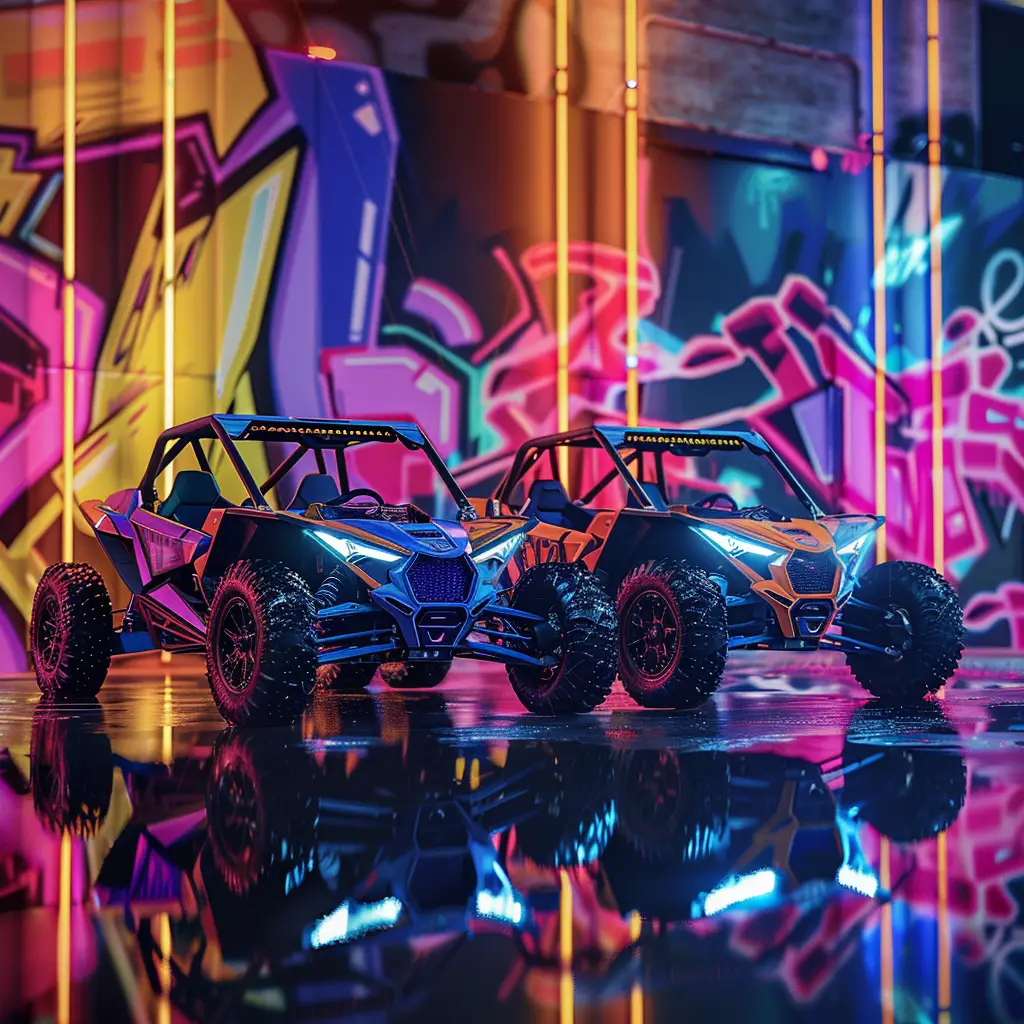
ed5eab5a ed38 40e5 b102 e7a03b02242f b
When it comes to choosing the most suitable ride-on toy for your child, the decision often revolves around the age, size, and preferences of the child. Here are some factors to consider when determining if a 12V ride-on is the right choice for your child:
- Age suitability: 12V ride-ons are generally designed for children between the ages of 3 to 7 years, offering an enjoyable and safe driving experience for this age group.
- Size and weight limit: Consider the weight limit of the ride-on toy to ensure the child can safely ride, maintaining speed and stability.
- Terrain and ride-on type: Decide where the ride-on toy will primarily be used, indoors or outdoors, and choose the appropriate ride-on type, such as quad bikes, SUVs, or tractors, which offers the best experience for the intended environment.
- Developmental readiness: Assess your child’s motor skills, coordination, and comfort level with speed to determine if they are ready for a 12V ride-on toy.
By taking these factors into account, parents can make an informed decision about whether a 12V ride-on toy aligns with their child’s age, size, and developmental stage, ensuring a safe, enjoyable, and thrilling electric ride-on experience.




















